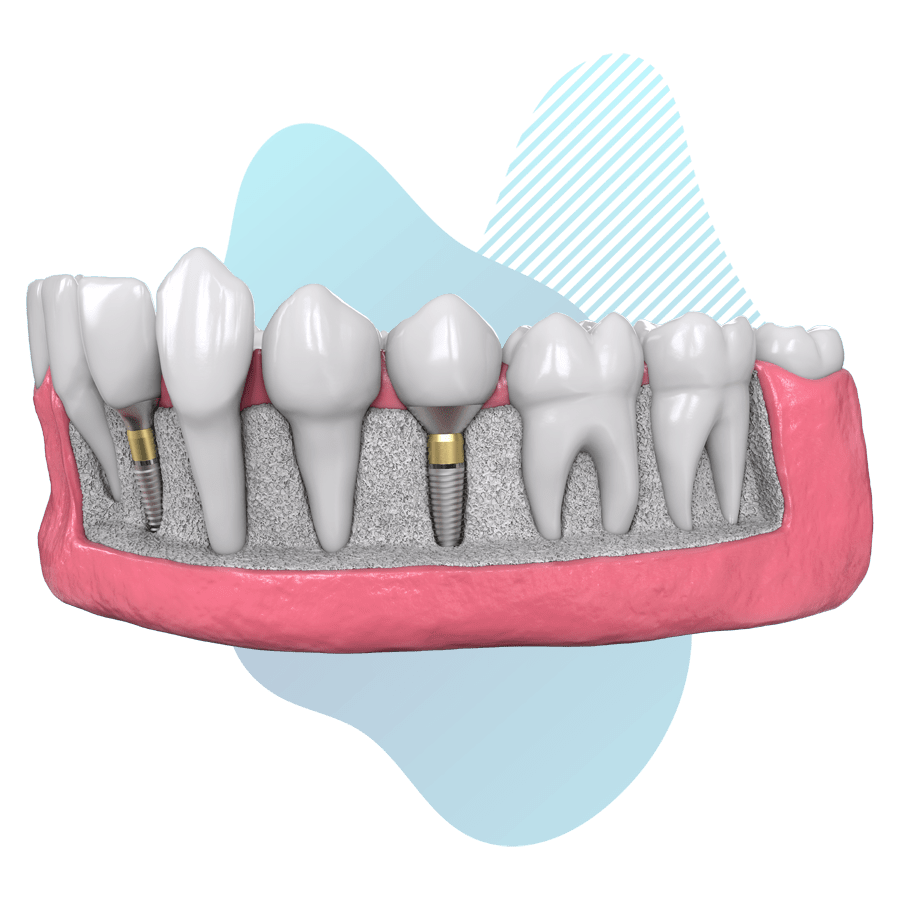Bone Augmentation (Bone Graft)
What happens if you have lost teeth and want to replace them with dental implants but don’t have enough healthy natural bone to support dental implants? The answer might be a bone graft.
A bone graft is one of several techniques used to rebuild bone, restore your natural jawline, and provide a solid and sturdy foundation for implant-supported teeth. Natural bone insufficiency can be caused by gum disease, tooth development defects, injury to the face after trauma as well as deterioration of the empty spaces in your mouth after the loss or removal of teeth.

Bone Grafting For Dental Implants In Forest hill & Dulwich
Before you have dental implants surgically inserted, your dentist will examine to ensure that your mouth can support them. Most people are suitable for dental implants, but some don’t have enough healthy bone to support them. And this problem must be addressed first, typically with a dental bone graft procedure, before the dental implants can be put in.
What Causes a Lack of Healthy Bone?
There can be several reasons why you lack the bone you need for dental implants. The following is a list of the most common causes:
- Gum disease
- Tooth development defects
- Long term denture use
- A past injury or trauma to the face
- Teeth removal if the subsequent space is left untreated.
- Dental procedures where efforts were not made to restore the bone
What is Bone Augmentation?
Bone augmentation is the process of rebuilding the bone. This helps to restore the jawline and smile and provides a solid foundation on which dental implants can be attached. Many different tooth bone graft procedures can be used to augment the bone, depending on the specific condition and needs of the patient. The most common is called bone grafts.
What to Expect from a Bone Graft for Dental Implants
A tooth bone graft is a safe and highly successful procedure. Your dentist will remove a small amount of bone from another location and attach it to the jaw. This is done in the dentist’s office using anaesthetic, and as it heals, the new sections of the bone bond to the old to make it stronger and better able to support an implant. After the bone grafting is complete, your mouth must heal entirely before any further procedures are performed, which can take anywhere from a few weeks to 2-3 months.
Other Bone Augmentation Procedures
There are several other typical bone augmentation procedures your dentist may use. These include the following:
- The sinus lift, which is a procedure that increases the amount of bone in the upper jaw and below the sinus so implants can be placed.
- Ridge expansion, which is a bone augmentation procedure that widens the jaw so implants can fit properly.
- An alveolar ridge preservation, a procedure that reduces bone loss after an extraction.
- Distraction osteogenesis, which makes a short bone into a longer one by breaking the bone apart and encouraging new bone to grow in the empty space.
Don’t Let Bone Loss Affect Your Smile.
Receive Professional Care Here!
Streamlined Dental Appointments
Submit your details using our form and book your appointment online. Our team members will also contact you to confirm your booking, ensuring a smooth and personalised dental care experience.